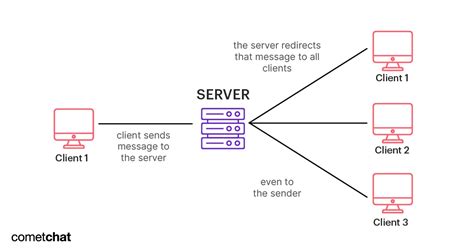How to Design a Robust and Scalable Message System
Designing a message system, whether for a simple chat application or a complex microservices architecture, requires careful consideration of several key factors. This guide will walk you through the critical design decisions and considerations to build a robust and scalable system.
Understanding Your Requirements
Before diving into the architecture, you need a clear understanding of your specific needs. Ask yourself these crucial questions:
- What type of messages? Are you dealing with text messages, images, videos, or custom data structures? The message format will heavily influence your design choices.
- Message delivery guarantees? Do you need guaranteed delivery (at-least-once, exactly-once), or is best-effort delivery sufficient? This impacts the level of complexity in your system.
- Scalability requirements? How many users and messages per second do you anticipate? This will guide your choice of technology and architecture.
- Message persistence? Do messages need to be stored persistently, or can they be ephemeral? Persistent messages require a durable storage solution.
- Message ordering? Is message order critical for your application? If so, you need mechanisms to ensure messages arrive in the correct sequence.
- Security considerations? How will you ensure message confidentiality and authenticity? Encryption and authentication mechanisms are essential.
Architectural Considerations
Several architectural patterns can be used to build a message system. The optimal choice depends on your specific requirements.
1. Publish-Subscribe (Pub/Sub)
This pattern is ideal for broadcasting messages to multiple subscribers. A publisher sends messages to a topic, and subscribers interested in that topic receive the messages. Popular technologies include Kafka and RabbitMQ.
Advantages: Loose coupling, scalability, and flexibility.
Disadvantages: Can be more complex to implement than simpler point-to-point systems.
2. Point-to-Point
In this model, a message is sent from one sender to one receiver. Message queues like RabbitMQ can be used to implement this pattern.
Advantages: Simple to implement and understand.
Disadvantages: Less scalable than Pub/Sub for many-to-many communication.
3. Message Queues
Message queues provide a buffer for messages, allowing asynchronous communication between components. This decoupling improves system robustness and scalability. Popular choices include RabbitMQ, Kafka, and Amazon SQS.
Advantages: Decoupling, improved reliability, and asynchronous processing.
Disadvantages: Adds complexity to the system.
Choosing the Right Technology
The technology stack significantly impacts the success of your message system. Popular choices include:
- Kafka: A high-throughput, distributed streaming platform ideal for large-scale data streaming applications.
- RabbitMQ: A versatile message broker supporting various messaging patterns.
- Amazon SQS: A managed message queuing service offered by AWS.
- Google Cloud Pub/Sub: A managed pub/sub service offered by Google Cloud Platform.
Implementing Your Message System
Once you've defined your requirements and chosen your architecture and technology, you can start implementing your system. Key considerations include:
- Message serialization: Choose a suitable format (e.g., JSON, Protobuf) for encoding your messages.
- Error handling: Implement robust error handling to manage message delivery failures.
- Monitoring and logging: Monitor key metrics to ensure the system's health and identify potential issues.
- Security: Implement appropriate security measures, including encryption and authentication.
Optimizing for Performance and Scalability
To ensure your message system performs well under load, consider these optimization techniques:
- Load balancing: Distribute the message load across multiple servers.
- Message batching: Send multiple messages in a single batch to reduce overhead.
- Caching: Cache frequently accessed data to improve performance.
- Asynchronous processing: Process messages asynchronously to avoid blocking operations.
By carefully considering these design choices and implementing best practices, you can build a robust, scalable, and reliable message system to meet your application's needs. Remember to always test thoroughly and monitor performance to ensure your system remains efficient and effective.
